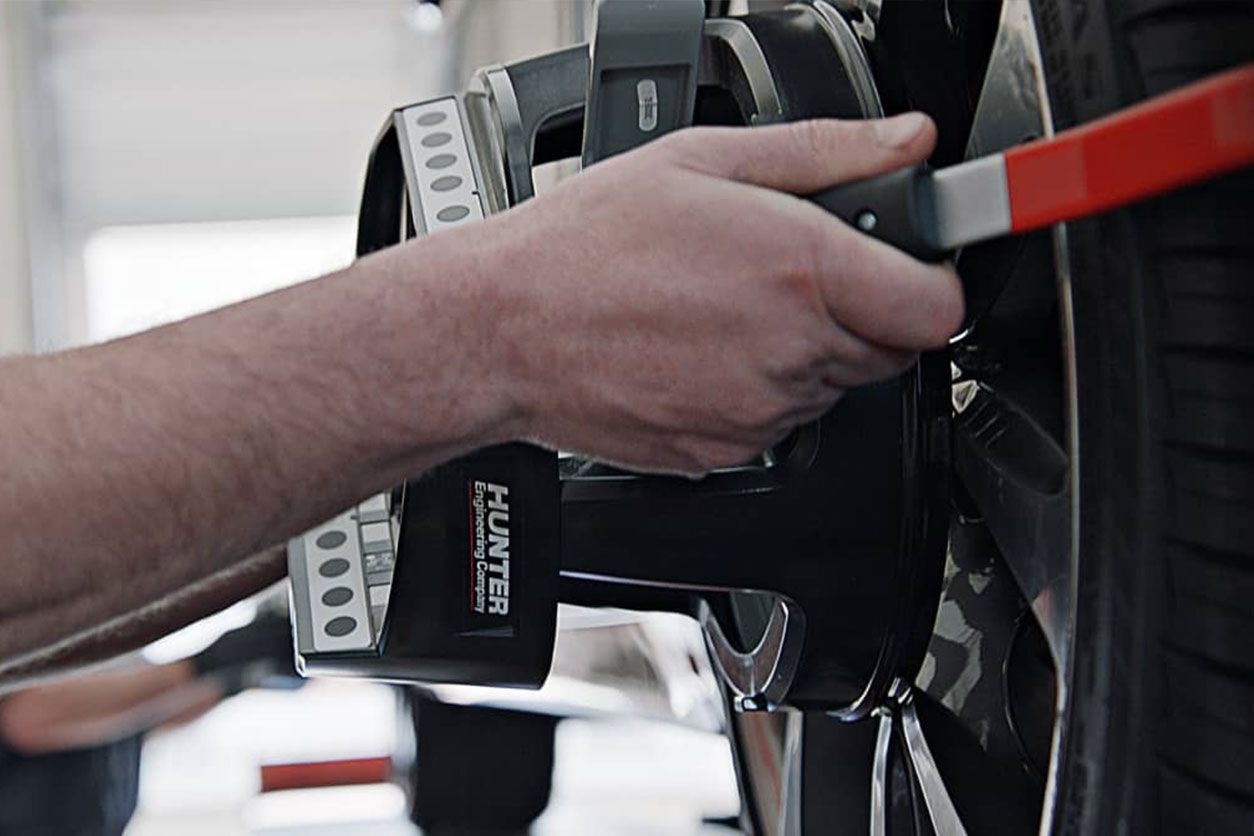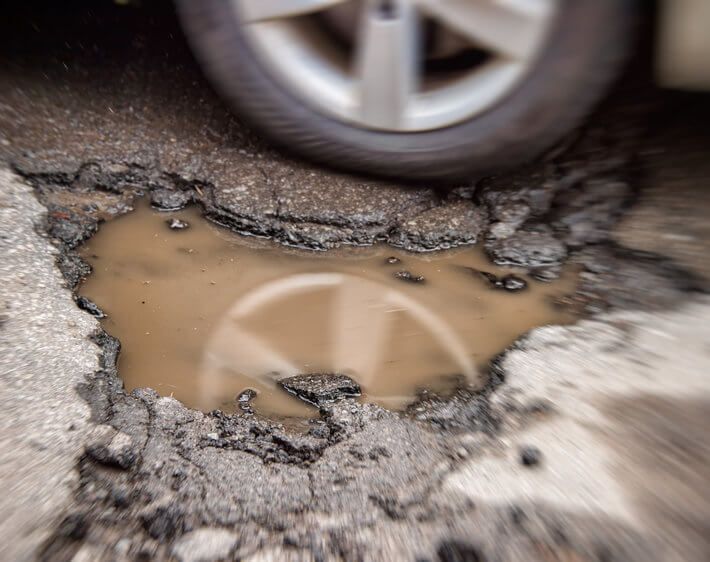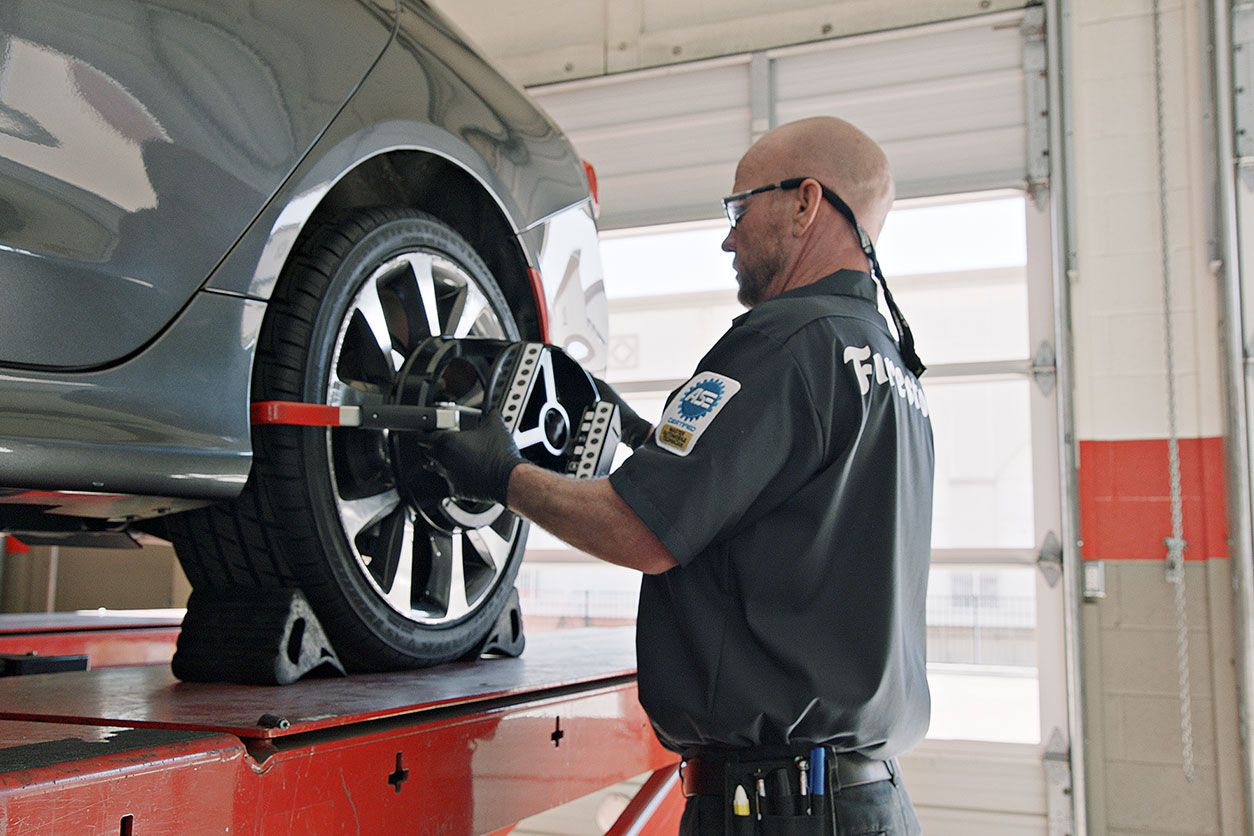You’re getting new tires for your vehicle. (Yay!) You did your homework—checked tread depth and spotted sidewall cracks—and you know now is the right time.
What you don’t know is whether you need an alignment for those new tires, how long your car can go between alignments, and answers to other important questions. Keep reading; we have your answers right here!
Is an alignment needed with new tires?
A wheel alignment isn't necessary when you have new tires installed, but it's a really (like, really) good idea. An alignment helps ensure that all four tires are correctly angled with each other and the road.
If you don’t get an alignment with new tires, you may experience a rough ride and experience uneven tire wear earlier than normal—which can shorten your tires’ lifespan. While there are plenty of affordable tires out there, you don’t want to spend money more often than necessary. A wheel alignment can help you get more miles out of a new set of tires.
How often does my car need an alignment?
The general rule of thumb is to get an alignment about every year. However, you should check your owner's manual to know what's best for your vehicle.
If you often drive in harsh conditions or on pothole-riddled streets, you may need an alignment more frequently—especially if you experience one of the following:
- Your vehicle veers from side to side.
- You hear a flopping (“womp womp”) noise when driving, which could signal underinflated tires, alignment issues, or both.
- You hit a pothole that jars your vehicle.
Why do wheel alignments matter?
Having your wheels aligned—and getting that alignment checked yearly—can help you save money in a couple of ways. We've already explained how poorly aligned tires can wear out faster and need replacing more often. But get this! Misalignment can also decrease gas mileage by up to 10%, reports Investopedia. Therefore, a wheel alignment could help you conserve fuel and fill up less often.
Do I need to get all four tires aligned at once?
Yes, the majority of vehicles today (cars, small SUVs, and vans) require a four-wheel alignment. Some cars with solid rear axles can only have their front wheels aligned. But even in the case of two-wheel alignments, your technician can check the rear tires for damage that may compromise your car's handling.
If all four tires can be aligned, they should be. If they can't, have your front wheels aligned, and the rear axle checked.
A Better Driving Experience is Straight Ahead
Getting an alignment when you have new tires installed is one of the best ways to get what you pay for—tires that last. Save time by finding your nearest Firestone Complete Auto Care and scheduling your tire installation and alignment online today!



